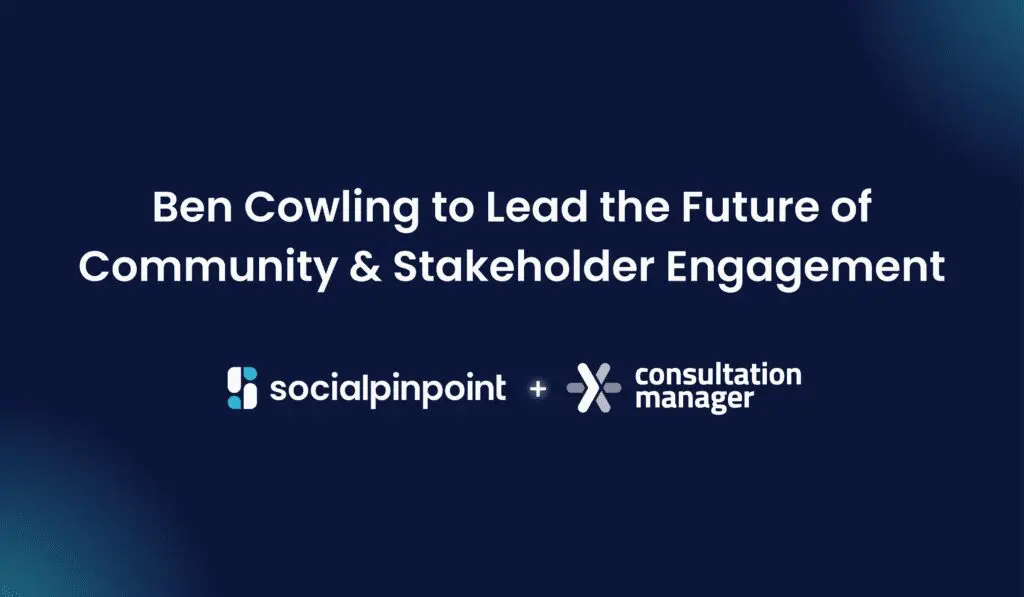Community engagement can transform communities. By encouraging public participation in projects that impact society it facilitates fair, equitable, and sustainable outcomes. It is an essential decision-making process for any organization, government, or individual that is driving projects which will have an impact on the community.
Traditional, executive-led approaches to community projects are becoming less effective. The dated top-down approach is slowly being replaced by collaborative decision-making and communities are asking for more say in the design and delivery of the services that impact them. Community issues are complex and it’s important to make the problem-solving process inclusive so that decision-makers have a better understanding of their community’s needs and aspirations before setting a course of action.
Here are six reasons why an effective community engagement strategy is important for both decision-makers and the public.
1. Gain a better understanding of the community’s needs and aspirations.
Community engagement isn’t a one-way street and it’s no longer about spreading information and telling people about what is being done in their community. It’s an ongoing dialogue between decision-makers and stakeholders. By enabling and engaging in a community-led conversation, decision-makers get to understand what people like or dislike about their community and the initiatives that could impact it. You can paint a far better picture of the needs and aspirations of your local community, and design appealing, transformative projects. When you understand the community’s perspective, you can also frame and communicate your initiative in a way that hits the mark and is aligned with the public’s top priorities.
2. Diverse perspectives empower decision-making.
Input on community initiatives needs to be gathered from a diverse and representative group in the community. When engagement projects are inundated with input from those with the loudest voice or the strongest opinion, the outcomes are only beneficial to one group and can be detrimental to the community as a whole. Without allowing a diverse set of perspectives to be aired, decision-makers can be swayed by the loudest voices and put their focus in the wrong areas. You should seek out marginalized or overlooked voices and create avenues for people of all backgrounds, motivations, and persuasions to speak up. That will give you a balanced understanding of the community’s views and enhance the value of the final decision.
3. Community engagement increases transparency.
Community engagement is a public process and it keeps decision-makers accountable. The community deserves to have transparency over the decision-making process and should feel that their input was taken into account. It also gives individuals in the community the opportunity to understand how a perspective or need which was different from their own had to be catered for and give them a better understanding and acceptance of a final decision or outcome. Knowing that all ideas and inputs have been fairly addressed and incorporated can drastically improve public sentiment around an initiative that you are driving. By engaging all stakeholders of public policy projects – local governments and organizations, businesses, residents and communities – we can deepen democracy and ensure that people have a say over the decisions that impact their everyday lives.
4. Community engagement helps your initiative to run smoothly.
Community engagement can help to identify roadblocks, which might otherwise blow out the timeframes and costs of a project that you are running. By taking an ongoing scan of the community’s needs, priorities, and key stakeholders, you can ensure that the project runs smoothly and that the budget is used effectively. Complaints and protests that might otherwise hold up your initiative can be identified, addressed, and catered for when your strategy, resources, and budget are established.
5. Create a greater sense of community ownership.
Community members have a deep and intimate knowledge of their local area, as well as scientific, technical, historical, and cultural insights. When these perspectives are shared between all parties and incorporated into decision-making, public decision-makers are better informed, more confident, and able to meet all needs. The flow-on effect is increased community trust in organizations and governance to make better public decisions. By establishing communicative relationships between your organization and the community, you can also improve the uptake of your services and people feel like they have played their part in the positive outcomes.
6. Create some fun.
This one is pretty simple, but online community engagement and public participation can be so much fun. You have the opportunity to fuel big dreams, talk about community aspirations, and brainstorm with your neighbors. Social Pinpoint can be used to create fun and exciting online engagement for your community or host some interesting activities for a younger audience.












